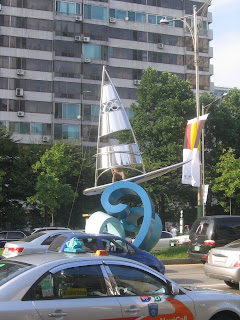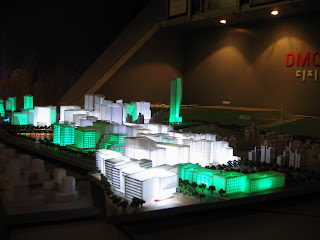Tom Sawyer's Asia: Yellow River Rocket
I have now been animate for 27 years. A creation of the Global Positioning Network's artificial intelligence engineers, my name's Tom Sawyer, and I'll be your guide down the historical Yellow River Basin. As we travel along this 3500 mile long waterway with a history as rich as the silt it has deposited along its pathway, I will help you to interpret the surroundings, interact with the people, and understand the importance of this national preserve.
I have been introduced to a number of the locals who inhabit the various regions that lie along the river's path, and indeed I have had number of conversations with most of the population in the cities, and villages. My omnipresence along the networks and multi-lingual translational functions have allowed me to gather heaps of information concerning the various customary social interactions, cultural nuances, and even personal pleasures and pursuits of the individuals. I am also able to conduct real-time auditory translation for you with near 97% accuracy for every major and minor dialect that we may come across along our travels. So if at any time yo have questions for me or for an individual along our way, please do not hesitate to ask me for assistance in interpreting or negotiating your surroundings. It's what I am here to do.
GPN also respects your desires for privacy, and the thrill and adventure that is inherent in finding one own way through a new environment. Therefore, a dormancy feature has been included in your software that allows you to reduce my functionality to the most basic of life systems monitoring at any time. This function can be engaged at anytime in three distinct ways: 1) Speaking the command: "dormant", followed by your special code word as initialized at your local network, 2) conducting the prescribed physical actions as pre programmed into your file at your local network affiliate, 3) Calling the pre-determined visual-cognitive combination through your visual cortex.
[write something about the different forms that the software can take on... physical, HUD, self-visilbe projection (only you can se me mode), and any others...]
This functionality is set to respond to any physio-cognitive activity that falls in the pre-determined "emergency" spectrum, again as set at your local network agency and their partner medical facilities. We monitor these levels at all times in an effort to establish your safety as number one priority during your journey. If you status measures within this spectrum for any longer than 3.5 seconds, emergency functionality will override any pre-set definitions, take an immersive analysis of the current situation, and alert the GPN. Again, the individual's safety reigns on high within our coding structure, so be assured that all actions taken on my behalf are in response to the systems prior knowledge of yourself and your surroundings.
All that legal jargon, safety first bologna, and "instruction manual" sheisse aside, let's go have ourselves a time to remember on the big river. On a personal note, I have travelled this path about 7,3450,000 since my last update, and am currently riding shotgun with 14,567 other individuals at different stages along the river. Never once have I had a repeat adventure, and I look forward to each one with the same zeal and excitement as the first one... it's in the programming.
The Power of Utopia
1 year ago











